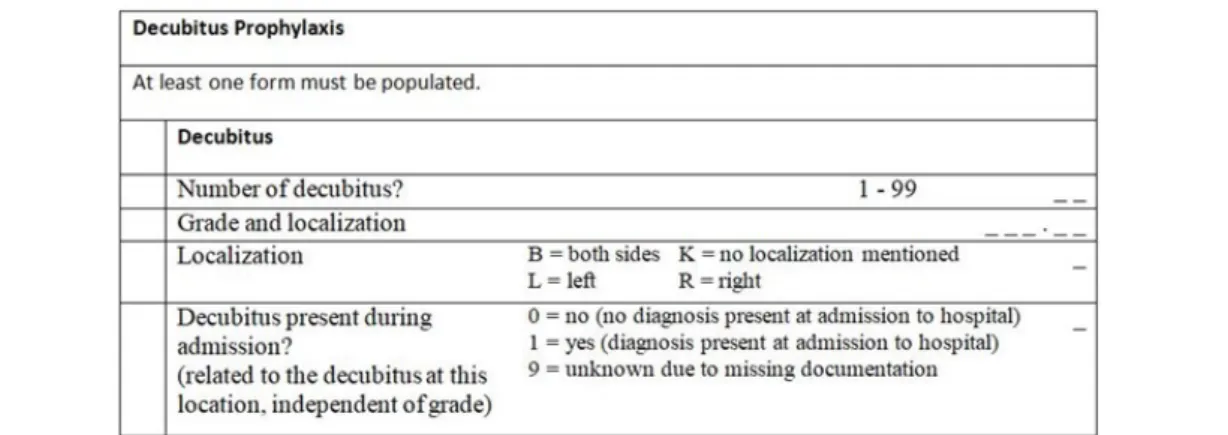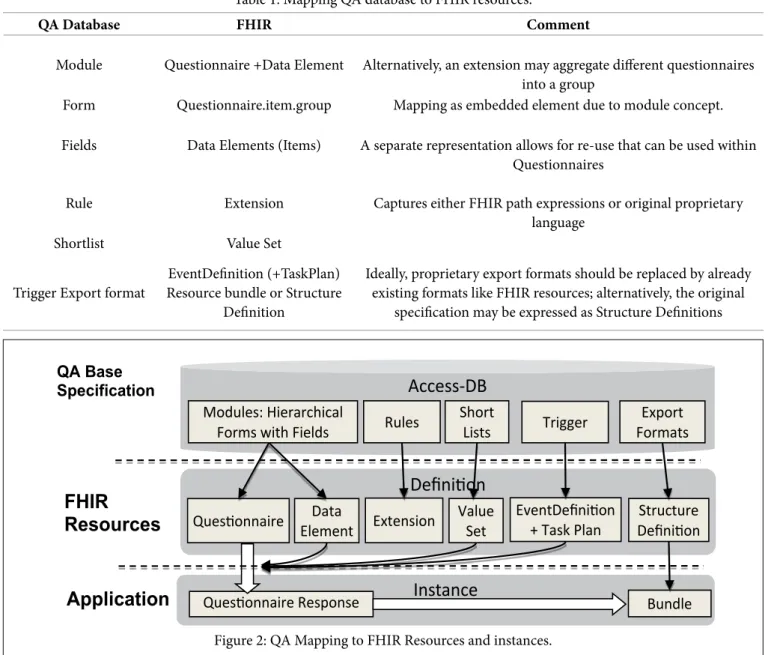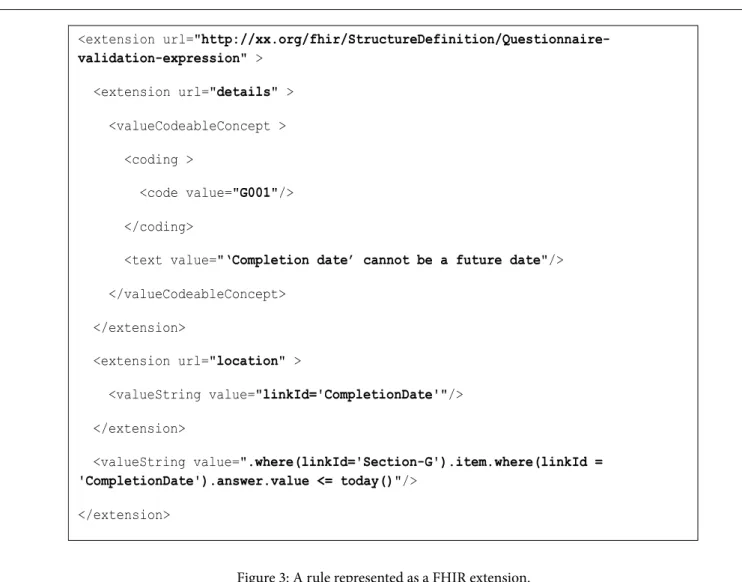Standardizing Medical Quality Assurance and Control in Germany Based on HL7® FHIR®
Frank Oemig1 and Bernd Blobel2,3,4
1 Deutsche Telekom Healthcare and Security Solutions GmbH, Bonn, Germany
2 Medical Faculty, University of Regensburg, Germany
3 eHealth Competence Center Bavaria, Deggendorf Institute of Technology, Germany
4 First Medical Faculty, Charles University Prague, Czech Republic
1 Introduction
Introducing communication and interoperability standards in Germany is a difficult task, not only because the market is separated by law into distinct sectors: ambulatory and stationary. Unfortunately, within these sectors the responsibilities are associated with different stakeholders without the necessity to agree on a single solution. In addition, each stakeholder always stresses that his requirements are very specific for the respective sector and are only relevant for the German health system. Therefore, they have the opinion that the migration to an international communication standard like HL7® v2.x, Clinical Document Architecture (CDA®) or Fast Healthcare Interoperability Resources (FHIR®) [1, 2] is inappropriate, not necessary or even impossible.
In Germany, hospitals and - to some extent - also physicians of the ambulatory sector are required by national law to deliver quality assurance (QA) and control data to public health agencies. The overall QA process lies in the responsibility of the national Institute of Quality Control and Transparence in the Health Sector (IQTIG - Institut für Qualitätssicherung und Transparenz im Gesundheitswesen [3]). The IQTIG was authorized by the so-called G-BA
(Gemeinsamer Bundesausschuss) [4], which was installed 2004 as a common decision-making organ for the different institutions of the public health sector.
This paper analyses the current features and requirements of quality assurance and control mechanisms in Germany and discusses a possible migration to HL7 FHIR.
2 Methods
The QS-Basisspezifikation (QA base specification), is the result of a joint effort between a group of German software vendors and the institute currently being responsible for QA, IQTIG, and its predecessors, the Bundesinstitut für Qualität und Patientensicherheit (BQS) [5] and the aQua institute [6]. The latter still publishes specifications on a similar basis, e.g. for the clinical cancer registries. Currently, these specifications are distributed (via download) within a ZIP file, that contains - along with the developer documentation and XML style sheets - two Microsoft Access databases providing all the necessary details for assembling and transmitting the QA data.
The MS Access databases for the QA documentation [7] contain a double-digit number of relational tables that
Abstract
In Germany, vendors in cooperation with the responsible organizations have developed a powerful mechanism to supply data for medical quality assurance and control to public health agencies. However, this mechanism is proprietary and limited in some regards. On the other hand, by the current means it comprehensively documents the necessary requirements worth being analyzed in detail
so that the shortcomings of the specification may be overcome by facilitating international standards. This paper provides the foundation for this approach and suggests a possible transition by introducing different possible options that can be facilitated independently.
Keywords
Quality assurance; Quality control; Messaging; FHIR;
Public health reporting; Rules
Correspondence to:
Prof. Dr. habil. Bernd Blobels, FACMI, FACHI, FHL7, FEFMI, MIAHSI Medical Faculty, University of Regensburg, Germany.
E-mail: bernd.blobel@klinik.uni-regensburg.de
EJBI 2018; 14(3):32-36 Received:March 21, 2018 Accepted: May 24, 2018 Published: July 06, 2018
Correspondence to:
Dr. Frank Oemig
Deutsche Telekom Healthcare and Security Solutions GmbH, Friedrich-Ebert-Allee 140, 53113 Bonn, Germany.
E-mail: Frank.Oemig@t-systems.com
currently represent the information about 26 QA modules (e.g., transplantations, decubitus prophylaxis, etc.), the corresponding forms for data entry (questionnaires) with labels, data elements and their attributes, rules controlling display and processing, coded information (value sets/short lists), format specifications for data export, and corresponding trigger events. In other words, the MS Access DB is used for representing the complete form- based data model in a computable fashion. From a pragmatic perspective, it is a very comprehensive database with a broad coverage of the necessary computational details because all information for data entry and communication is provided and in real use. Consequently, the vendors are able to import the contents of the database into their individual software solutions and to generate with a minimum manual postprocessing executable applications. Figure 1 demonstrates a small snippet of such a form as generated by one of the vendors. It contains structural information (indentation) with text (labels), information with possible data and fields for data entry. The latter is shown as small underscores in Figure 1.
In the first step of the process for generating the export form for QA data, trigger events are defined to indicate and control when a new form must be instantiated. The trigger events are evaluated based on data the specialized QA systems have received from the HIS/CIS like all other subsystems by means of HL7 v2 messages. For instance, they monitor the primary diagnosis and procedure codes as the primary trigger for starting the reporting process. Once a form is triggered (2nd step), the QA system generates the form and instantiates it with data from previously received messages as far as possible. This step requires a proper identification of the corresponding data by manual inspection and analysis of the database contents as a precondition to generate the applications. In the 3rd step, all remaining (missing) data must then be entered manually because it can neither be taken from the already received data nor be retrieved from the originating HIS/CIS because of missing semantic details allowing for corresponding queries. During the data entry process, rules control appearance (visbility) of sections and consistency of entered data. Finally, the assembled data is then converted into the desired export format.
The tables and their relations as contained in the database are examined with regard to their semantic contents and the intended functionality according to the previously mentioned steps.
3 Results
The data contained in the database requires a comprehensive approach allowing for comprising all aspects.
The upcoming FHIR standard seems too qualified and appropriate for that purpose.
3.1 Mapping to FHIR Resources
The analysis presented in this section is primarily based on the QA base specification, whose (main) concepts are shown in the left column in Table 1 and in Figure 2. The middle column proposes a mapping to FHIR elements, which is explained in the following with more details.
The QA base specification consists of modules for certain topics, e.g. decubitus prophylaxis. Typically, they consist of a set of hierarchically structured and related forms belonging to that topic. Figure 1 provides a snippet as an example of a top-most “base form”. In principle, each form could be represented by an inidividual Questionnaire resource itself.
Unfortunately, this approach will complicate consistency and completeness checking across forms so that a representation as individual item groups within an overarching Questionnaire appears more appropriate.
Each form contains several fields, which are usually organized as groups of fields that also allow for nesting.
The structure of the fields is maintained as groups with the fields as items within those groups. The content definition of the fields is represented as FHIR DataElement resources to which the Questionnaire items are referencing. This apporach allows for identification and reuse of fields across forms and modules.
Rules are facilitated to control data entry. Plausibility rules support data entry by validating the contents when
Figure 1: Part of a data entry form that belongs to the Decubitus Module DEK (translated to English).
QA Database FHIR Comment
Module Questionnaire +Data Element Alternatively, an extension may aggregate different questionnaires into a group
Form Questionnaire.item.group Mapping as embedded element due to module concept.
Fields Data Elements (Items) A separate representation allows for re-use that can be used within Questionnaires
Rule Extension Captures either FHIR path expressions or original proprietary language
Shortlist Value Set
Trigger Export format EventDefinition (+TaskPlan) Resource bundle or Structure
Definition
Ideally, proprietary export formats should be replaced by already existing formats like FHIR resources; alternatively, the original
specification may be expressed as Structure Definitions Table 1: Mapping QA database to FHIR resources.
Instance
QA Base Specification
Definition Access-DB
Modules: Hierarchical
Forms with Fields Rules Short
Lists Trigger
Questionnaire
FHIR Resources
Questionnaire Response
Structure Definition Value
Set
Bundle Export Formats
EventDefinition + Task Plan Data
Element Extension
Application
Figure 2: QA Mapping to FHIR Resources and instances.
populating the forms. Rules can apply to either single fields or to previously defined groups of fields. This capability ensures that only valid and complete data can be entered. Other rules trigger the existence of specific parts of the data set depending on the values of other fields of the form. A good example is about pregnancy: This data group is made visible for female patients only. Answering this question with
“
yes”
(checkmarked) may then trigger a field“
week of pregnancy”
asking for a one- or two- digit decimal number in the range of 0 to 42.For some fields the allowed values are specified as a shortlist (combobox), maintained as entries in a table of the database. For instance, the field “Localization” can have the values “B” (both sides), “K” (not specified), “L” (left), or “R” (right). Other aspects are the definition and evaluation of trigger events for selecting cases that have to be reported, and the way relevant QA data is generated from the entries in the forms. The trigger mechanism could be represented using the FHIR Event Definition resource.
To ensure data privacy, no personal information of a patient is exposed to the public health agency, i.e., identifying information such as name, address, IDs, demographic information is removed from the data set by not including it in the export specification. Exported QA data can be represented via resource bundles or logical models in form of StructureDefinitions.
3.2 Representing and Mapping Rules
As mentioned earlier, rules are used to validate values entered for a single field or a group of fields. Also, some parts of the form are only shown to the user under certain conditions expressed by rules. This latter kind of rules can be expressed by dependencies represented as attributes of the questionnaire resource (“enableWhen”). But plausibility rules require an expansion to FHIR resources as demonstrated
in Figure 3. The depicted rule expresses that a CompletionDate cannot be later than the value of “today”.
Rules can be defined and included into a Questionnaire via extensions - alternative approaches (eg. StructureDefinition) might be viable, too.
However, the set of rules expressed in the MS Access database provide a valuable list of necessary functionalities. For example, a specific field might be required to have at least one value (or all values) from a specific value set, whereas another field might not be allowed to contain certain data. In the current version of the QA base specification, these details are not represented using a formal language with a grammar. Hence, the expansion of FHIRPath language with these functions would benefit from the requirements extracted (reverse engineered) from the MS Access DB whereas FHIRPath would become this base language.
Facilitating FHIR features like external references also overcomes the missing functionality by specifying queries for missing data avoiding reentering the data manually.
4 Discussion
The current QA base specification is a powerful specification that allows for an easy implementation of graphical user interfaces for identifying cases to be reported, filling in the QA forms, and finally submitting the exported pseudonymized data. However, there are several shortcomings of this approach. First, the representation of the specification as a MS Access database is proprietary. The lack of a clearly defined and harmonized semantics makes it difficult to import data from the primary systems, and the reported QA data can only be used for that specific purpose. Acceptance on an international level cannot be expected then.
Although there are first attempts to use the QA base specification for clinical registries like the clinical cancer registries, the limitations of this approach are preserved. Also, the different registries have different requirements, so that a
“one-fits-all” approach is not viable. The limitations can be addressed by using HL7 FHIR in combination with a specific
<extension url="http://xx.org/fhir/StructureDefinition/Questionnaire- validation-expression" >
<extension url="details" >
<valueCodeableConcept >
<coding >
<code value="G001"/>
</coding>
<text value="‘Completion date’ cannot be a future date"/>
</valueCodeableConcept>
</extension>
<extension url="location" >
<valueString value="linkId='CompletionDate'"/>
</extension>
<valueString value=".where(linkId='Section-G').item.where(linkId = 'CompletionDate').answer.value <= today()"/>
</extension>
Figure 3: A rule represented as a FHIR extension.
implementation guide describing the specific usage and necessary additions (expansions).
There are different options in progressing towards using international standards. Of course, a full migration appears most useful, but immediately enforces the most workload to convert and transfer the whole specification. Instead, a stepwise migration would also be helpful. It may start with an encapsulation of value sets allowing for re-use within other communication scenarios.
Another useful step would be to replace the proprietary export formats with FHIR resource bundles. A less optimal, but possible solution would be the definition of logical models to represent the individual data elements.
However, a remaining challenge is the replacement of the grammatic-free language designed for the German QA process by FHIRPath expressions. Conversely, an expansion of the FHIRPath/
FluentPath expression language with constructs stemming from real-world use cases might be beneficial to FHIR. This, for instance, includes the possibility of user-defined function, and the inclusion of particular functions from the IQTIG specification.
5 Conclusion
Given the results and possibilities as described above, it appears to be the right point in time to introduce the German specific requirements to the international community, so that an improvement of FHIR resources may benefit from the lessons learned in Germany while improving the QA base specification.
In the case of QA and clinical registries, the ultimate specification to implement is decided by the regulatory bodies and their authorized institutions and not the software vendors. Hence, to take advantage from these options a political debate is necessary involving and convincing the relevant institutions.
6 Acknowledgement
The authors are indebted to thank the international community for investing an unbelievable amount of time working on the details of FHIR.
References
[1] Health Level Seven, International. http://www.hl7.org [2] Fast Healthcare Interoperability Resources (FHIR),
Standard for Trial Use (STU) 3. http://www.hl7.org/fhir [3] IQTIG, Institute for Quality Assurance and Transparency
in Health Care. http://www.iqtig.de
[4] G-BA, Gemeinsamer Bundesausschuss. https://www.g- ba.de
[5] Bundesinstitut für Qualität und Patientensicherheit (BQS). http://www.bqs-institut.de
[6] aQua Institut. https://www.aqua-institut.de/
[7] QA MS Access Database. https://iqtig.org/downloads/
spezifikation/Einrichtungsbezogene_QS-Dokumentati- on/2017/V01/2017_QESUE_EDOK_RB_XML_V01.zip


